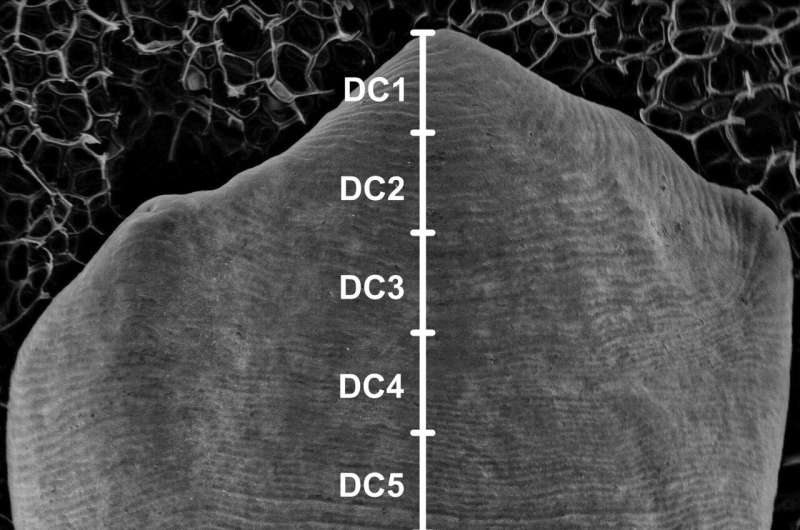This article has been reviewed according to Science X's editorial process and policies. Editors have highlighted the following attributes while ensuring the content's credibility:
fact-checked
proofread
Scientists use AI to evaluate dental anthropology

Mario Modesto Mata, a researcher in the Dental Anthropology Group at the Centro Nacional de Investigación sobre la Evolución Humana (CENIEH), is the lead author of a paper published in The Anatomical Record, on the use of artificial neural networks to reconstruct the number of perikymata, which are the growth lines in the enamel, but which are absent in worn teeth.
Teeth are an almost inexhaustible source of information from both the biological and taxonomic points of view. Because of how they grow, it is possible to count their lines directly and estimate the formation time in days. However, counting perikymata presents difficulties caused by the condition of the tooth, because if the piece is worn through normal use, part of the perikymata will have been lost with the loss of enamel.
"Solving this problem is of vital importance, as it would let us increase the number of teeth that are suitable for evolutionary studies, and so lead to more reliable conclusions," affirms Modesto Mata, who belongs to the European project Tied2Teeth (ERC-2021-ADG) which is led by the researcher Leslea Hlusko.
According to the paper, when we know how much the enamel has diminished, this being measured as the percentage of the crown height that has disappeared, we can apply techniques from artificial intelligence to predict the number of perikymata missing in any tooth from modern humans.
Specifically, artificial neural networks were developed to predict the number of perikymata when a tooth has lost up to 30% of the crown height. The outcome after validating the neural networks shows that when 30% of the enamel is missing, on 86% of occasions, the maximum error is only 3 perikymata in total.
"These are such precise data on the growth lines that they will enable us to predict the complete formation time of the enamel that is very close to reality, showing us that neural networks can be used to investigate questions in paleobiology," says Modesto Mata.
To maximize the use and application of these neural networks, the authors of this study have developed software in the form of an R package called teethR, (from "teeth aRe wonderful"), which may be freely distributed and installed. No training in AI is required to know how to use it: a very basic knowledge of R is enough. Using a function developed in the package, predictions can be made very rapidly.
More information: Mario Modesto‐Mata et al, Artificial neural networks reconstruct missing perikymata in worn teeth, The Anatomical Record (2024). DOI: 10.1002/ar.25416
Provided by CENIEH




















